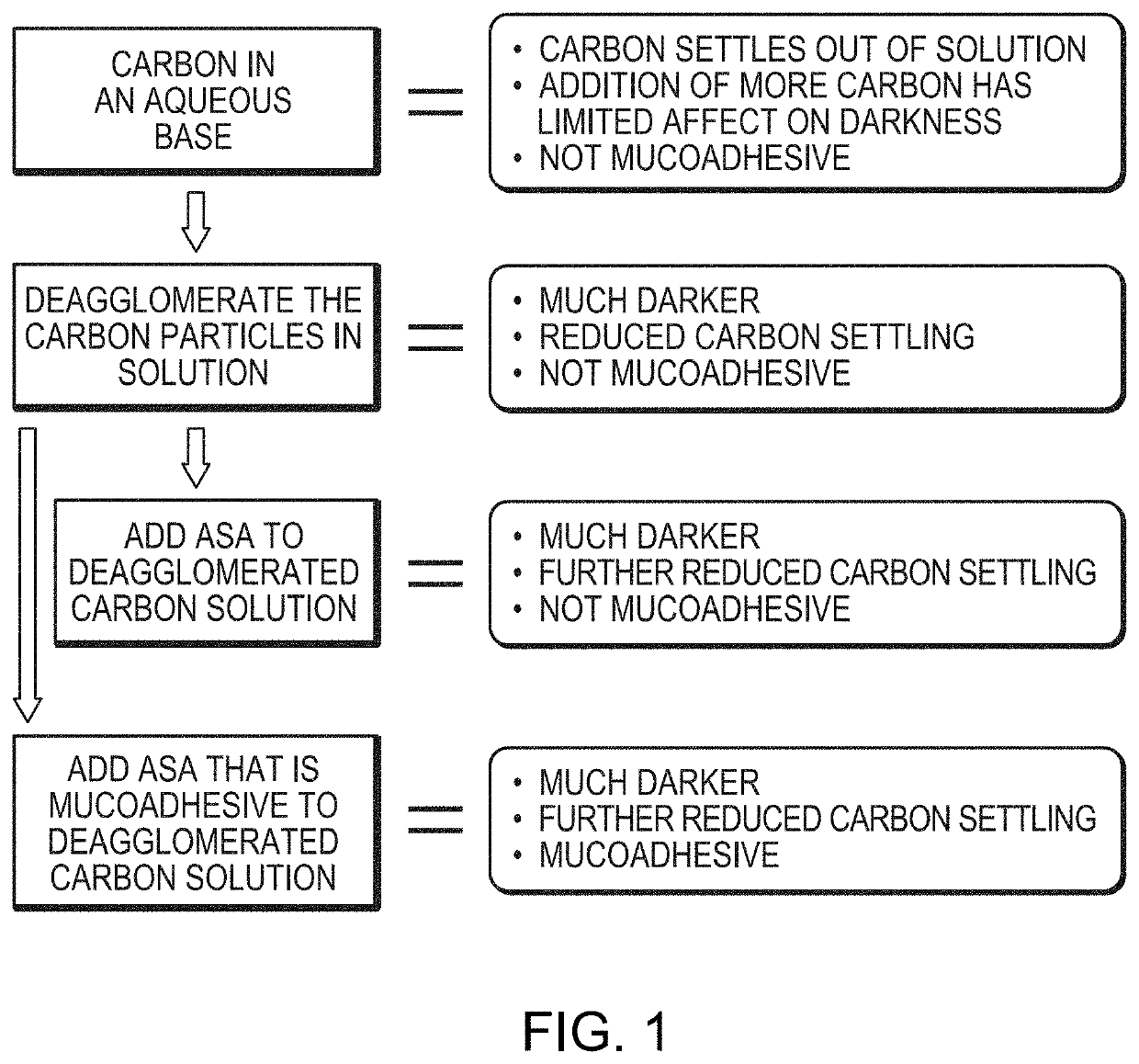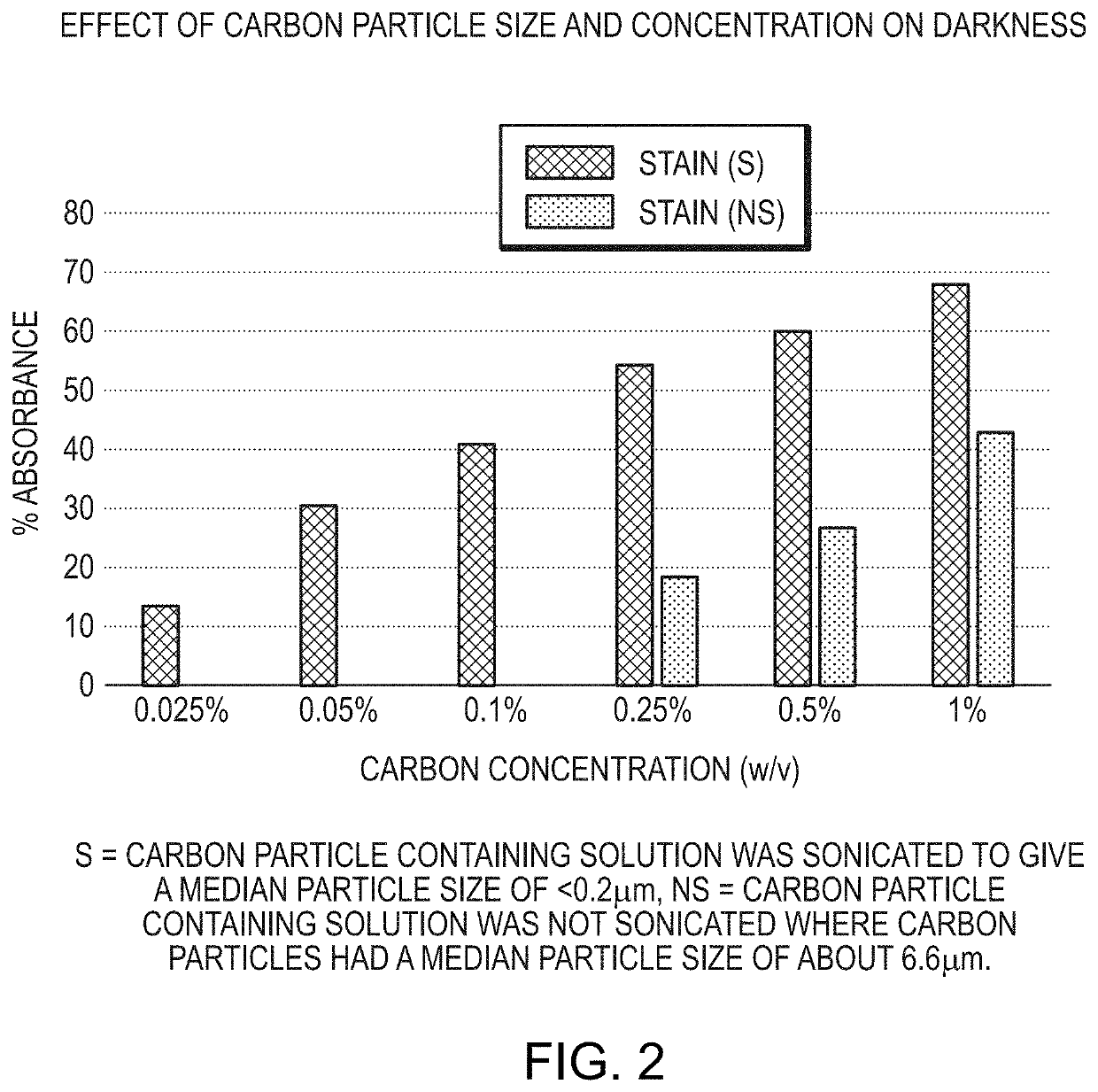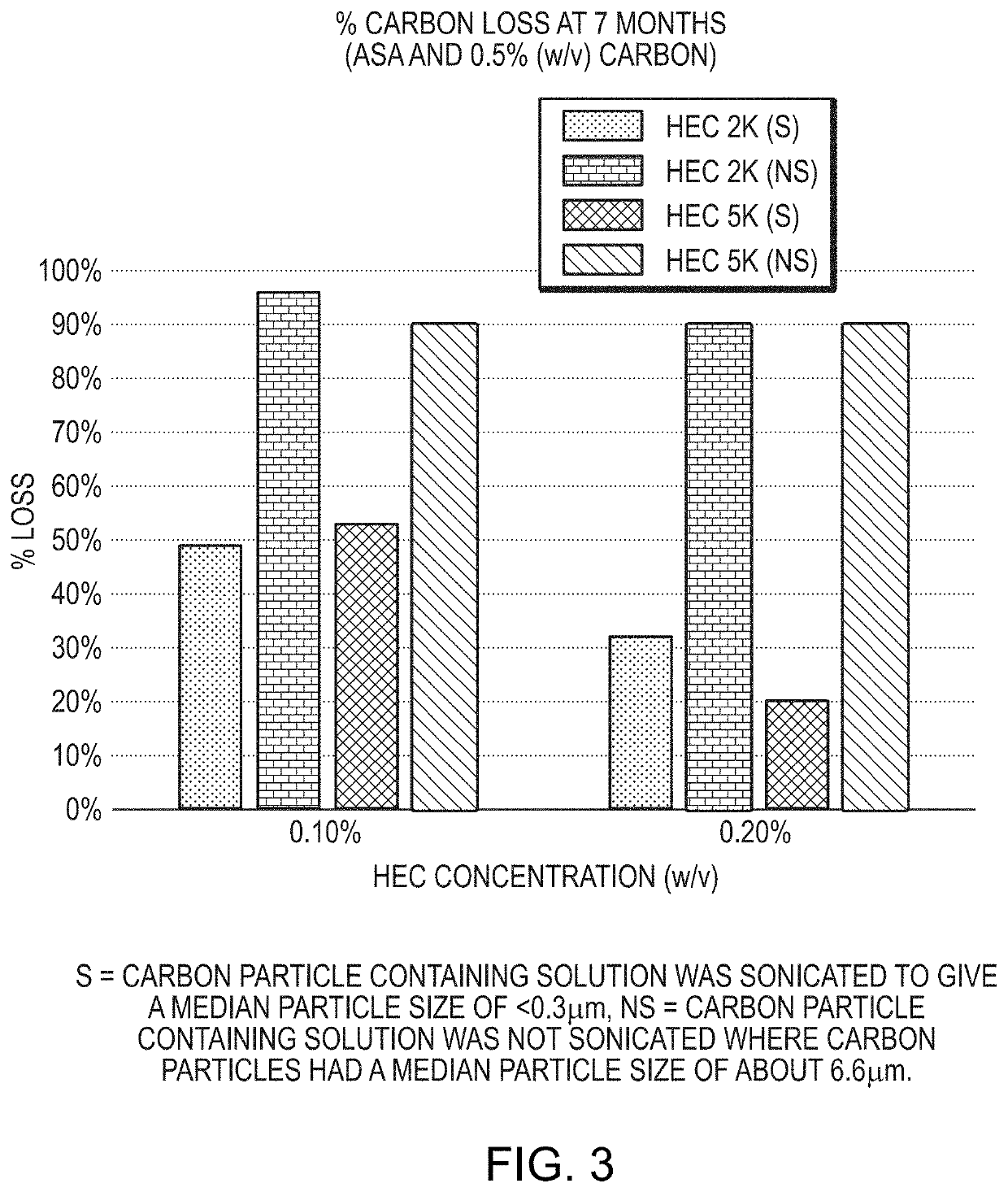Tissue stain and use thereof
a technology of tissue stain and composition, which is applied in the field of tissue stain composition, can solve the problems of difficult endoscopic visualization of existing stains (indocyanine green-based stains) and difficulty in identifying marked regions
- Summary
- Abstract
- Description
- Claims
- Application Information
AI Technical Summary
Benefits of technology
Problems solved by technology
Method used
Image
Examples
example 1
Carbon Particle Size on Darkness of Tissue Stain
[0127]This Example shows that carbon particle size has a profound impact on the darkness of a tissue staining composition.
[0128]Various test solutions were prepared containing different concentrations of carbon particles ranging from 0.025%-1.0% (w / v) of carbon particles (Monarch 4750 from Cabot Corp., Billerica Mass.) that were either not deagglomerated and thus contained carbon particles having a mean particle diameter of about 6.6 μm or deagglomerated by sonication to produce carbon particles having a mean diameter less than 0.2 μm. The balance of each test solution included 15% (w / v) glycerol, 1% (w / v) Tween® 80, 1% (w / v) benzyl alcohol, 0.01% (w / v) simethicone, and sterile water for injection (SWFI).
[0129]The test solutions were prepared as follows.
[0130]A first (2×) pre-mix was prepared by adding the following ingredients to SWFI at 80-100° C., one at a time, and mixing for 15 minutes before adding the next ingredient, to give th...
example 2
f Carbon Particle Size on Particle Sedimentation (Settling)
[0139]This example demonstrates that the size of the carbon particles can have a profound effect on the settling of the carbon particles.
[0140]In this example, two tissue stains were prepared that were the same (containing 1% (w / v) Tween® 80, 15% (w / v) glycerol, 1% (w / v) benzyl alcohol, and 0.01% (w / v) simethicone), and containing 0.27% (w / v) carbon particles (Monarch 4750 from Cabot Corp., Billerica Mass.) that were either not deagglomerated and thus contained carbon particles having a mean particle diameter of about 6.6 μm or deagglomerated by homogenization to produce carbon particles having a mean diameter less than 0.2 μm. The resulting particles were analyzed for particle size and stability.
[0141]The tissue stain containing the deagglomerated carbon particles were prepared from a carbon particle pre-mix containing the ingredients set forth in TABLE 2A, and a Tween® 80 premix set forth in TABLE 2B.
[0142]
TABLE 2ACarbon P...
example 3
rticle-Based Tissue Stains with Desirable Anti-Settling and Mucoadhesive Properties
[0156]This example demonstrates that it is possible to create a carbon particle-based tissue staining composition that is more resistant to settling than commercially available tissue staining solutions. The size of the carbon particles has a profound effect on the settling of the particles. For example, carbon particles having a mean particle diameter less than 0.3 μm (for example, less than 0.2 μm) exhibit much lower sedimentation over time especially in the presence of an agent, for example, a surfactant, such as a non-ionic surfactant, that prevents reagglomeration of the carbon particles.
[0157]However, under certain circumstances, it may be desirable to combine the carbon particles (e.g., in the presence of a surfactant) with an anti-settling agent. This example also demonstrates that the particle size and / or the settling agent can be used to create a tissue staining composition that has the appr...
PUM
 Login to View More
Login to View More Abstract
Description
Claims
Application Information
 Login to View More
Login to View More - R&D
- Intellectual Property
- Life Sciences
- Materials
- Tech Scout
- Unparalleled Data Quality
- Higher Quality Content
- 60% Fewer Hallucinations
Browse by: Latest US Patents, China's latest patents, Technical Efficacy Thesaurus, Application Domain, Technology Topic, Popular Technical Reports.
© 2025 PatSnap. All rights reserved.Legal|Privacy policy|Modern Slavery Act Transparency Statement|Sitemap|About US| Contact US: help@patsnap.com



